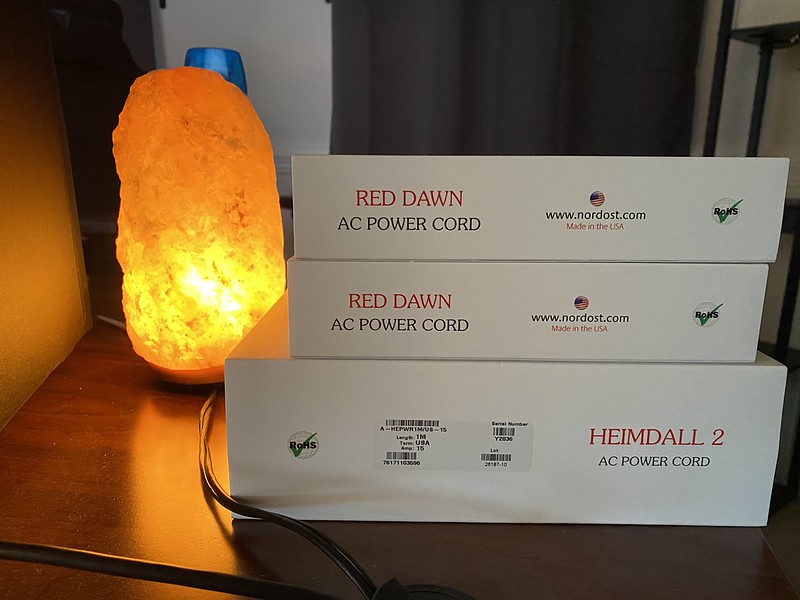Is there a certain brand cable where did u get from What ends are you using.If i make em them i will see if i hear a diff. Did you try different cables. Did you solder the ends?
M.
"12/3 SOOW Portable Power Cable" is how this wire type is listed on the big box home stores web sites. It's usually purchased by the foot. No specific brand.
You'll need 15A plugs which allow for thick wire, and these are available from the big three home stores. I buy the Legrand plugs for the wall outlet end, both straight and angled. The angle model let's you choose which direction the wire comes out.

For the amp end of the cord, the connectors I've purchased in the past are no longer available on the jungle site, but there's other offerings out there. The main concept I look for is a connector with plenty of "bite" for very positive connection. Also, FWIW, the spade clamps are made of copper, I doubt this has much effect, but there ya go.
The wires are inserted into screw clamp terminals, so no soldering.
I wouldn't expect any change in sound by changing the power cords from those shipped with the Expressions. The woofer amps just don't seem to draw a lot of current. The ONLY reasons I changed mine is to make them the length I wanted, and that I like how thick the insulation is - with the hopes that "if" there is any chance to reduce spurious electrical interference of any kind to/from other wires, so be it.
I've only experienced one situation where replacing the power cord resulted in an audible difference. I purchased a demo amp which required a 15 Amp outlet and was supposed to come with a 15 Amp cord. The salesman gave me the wrong cord which was rated at 10 Amps. At high volume there was some harshness that I was never able to overcome. Once I looked at the wire gauge of the cord, then investigated what I should have been given, I then made my own properly sized cord. The sound difference was immediately apparent and repeatable to anyone who heard it. BUT, it is simply that current was being choked by the wrong cord. Once the amp was given all the juice it wanted it was happy, and it ran cooler (don't really understand why, but I'm not complaining).
The way I figure it, if I have 12 gauge wire in the wall I want to match that all the way to the amp. That way at least I'm not choking off anything. If the really quick transients want it, they can get it.
edit: I just did a quick test to measure current draw and the highest reading was under 1.7 Amps @ 126 Volts, so around 215 Watts @ 1ms Peak. So this is very far from high current.



















